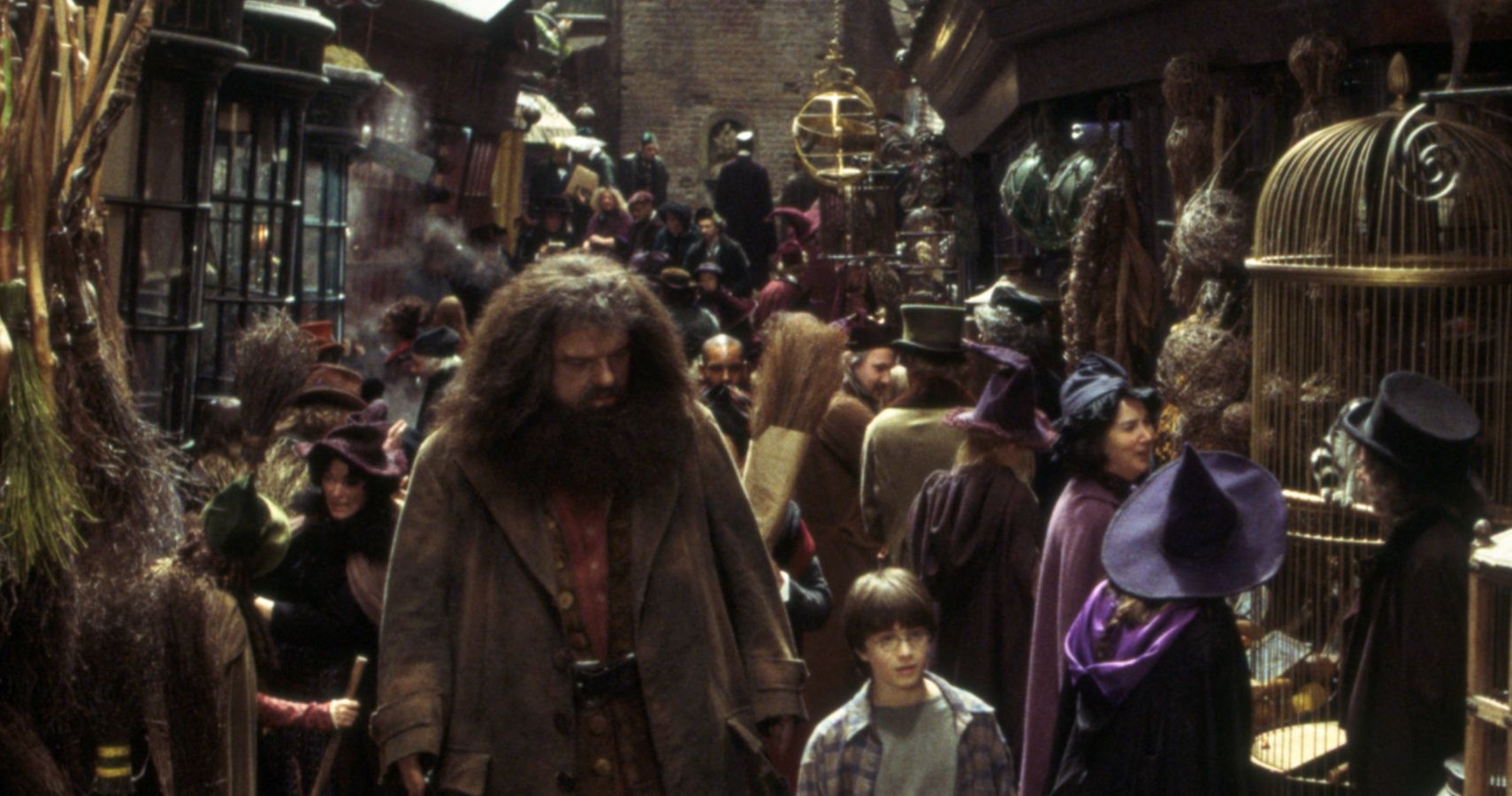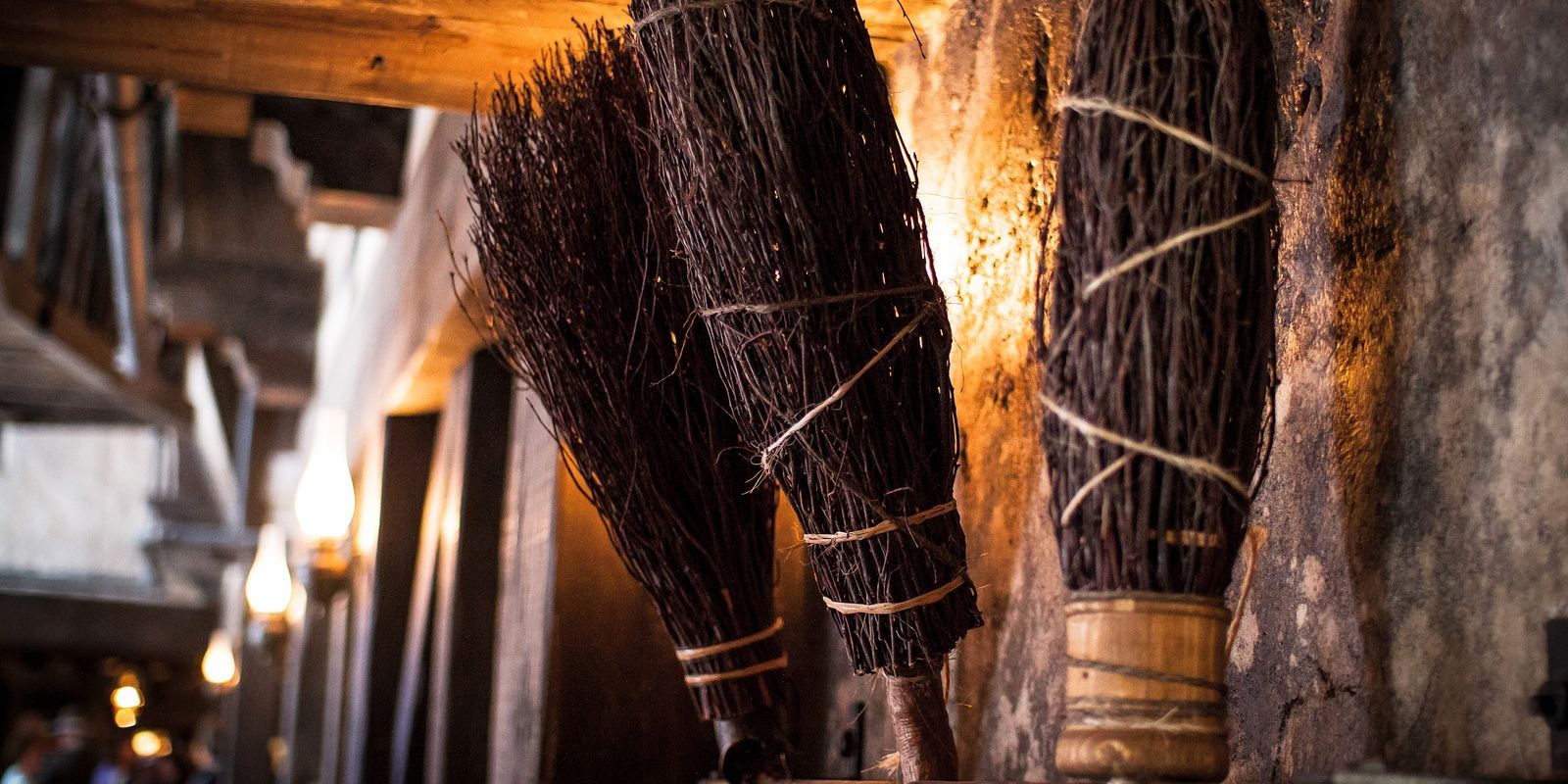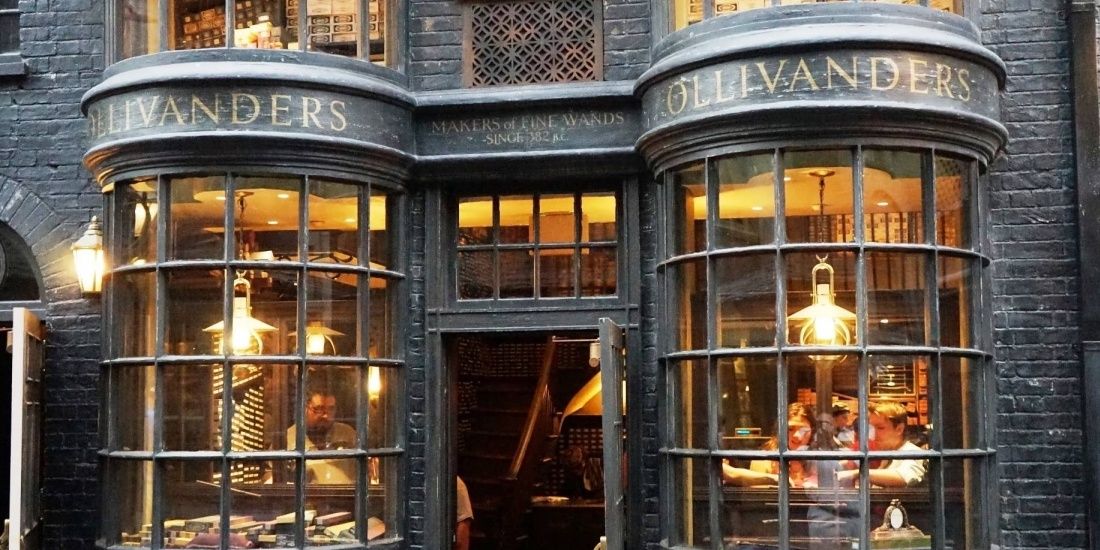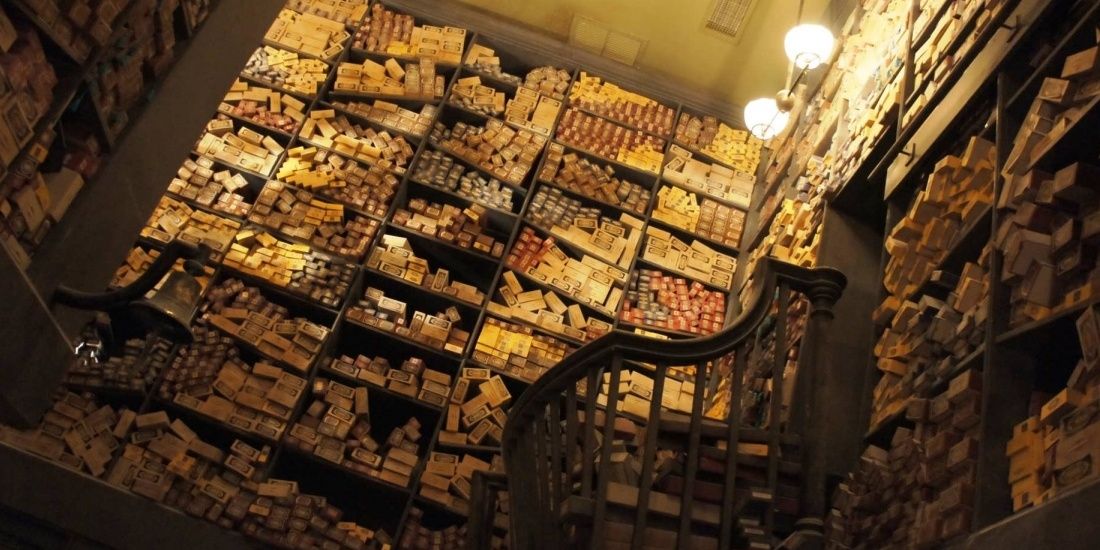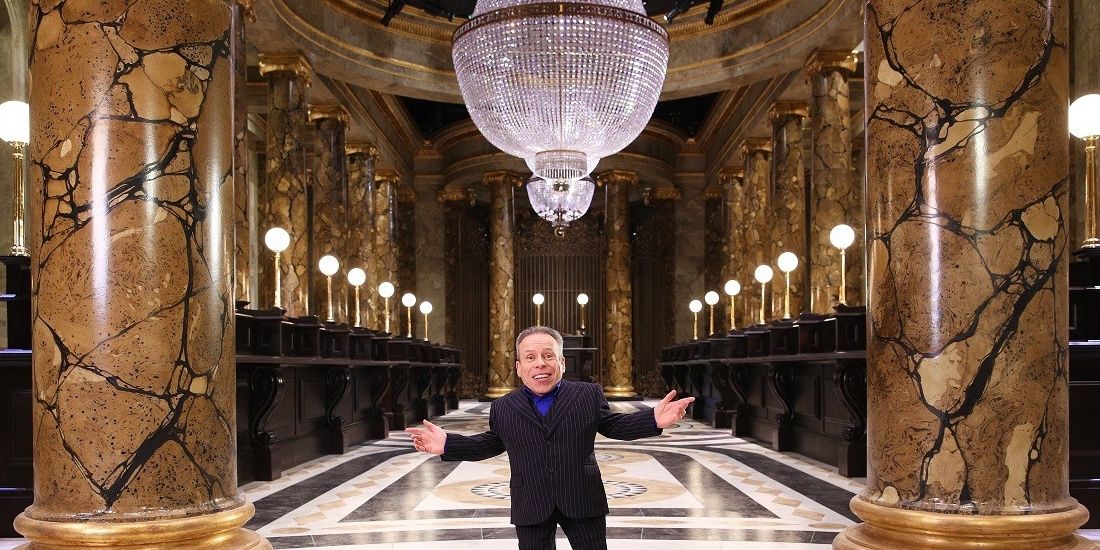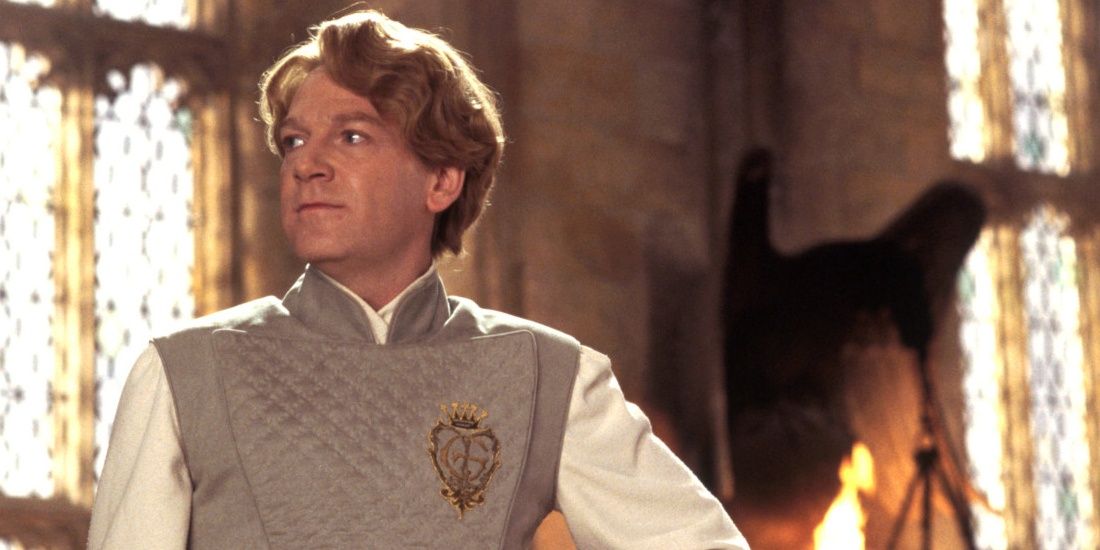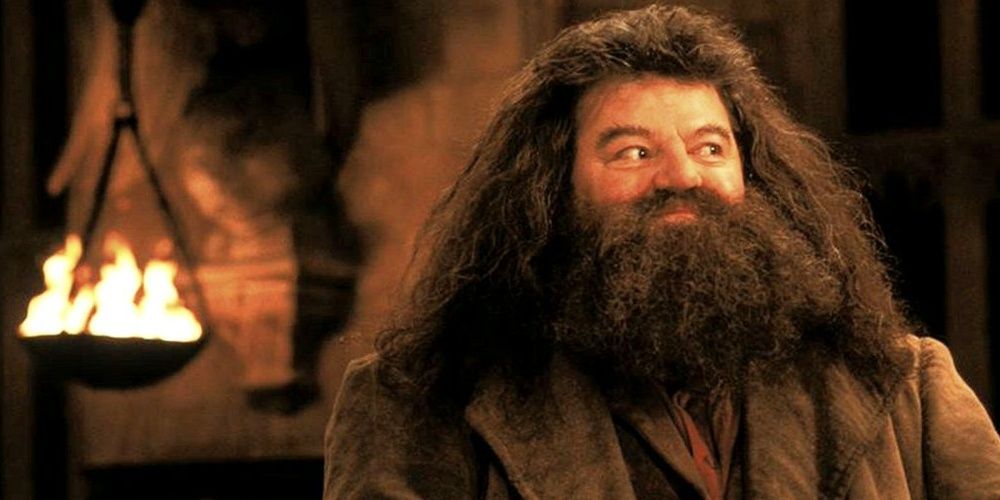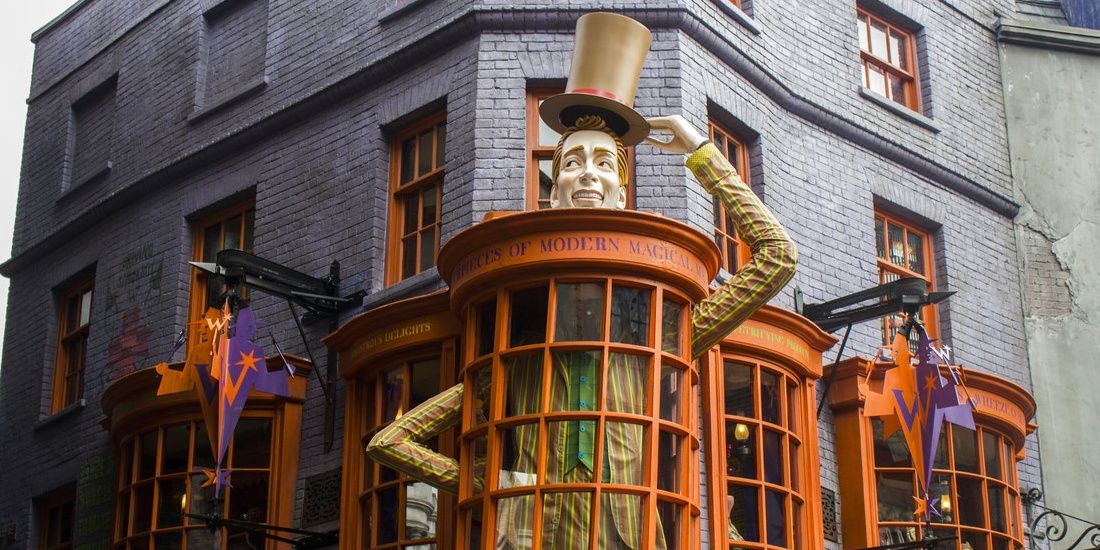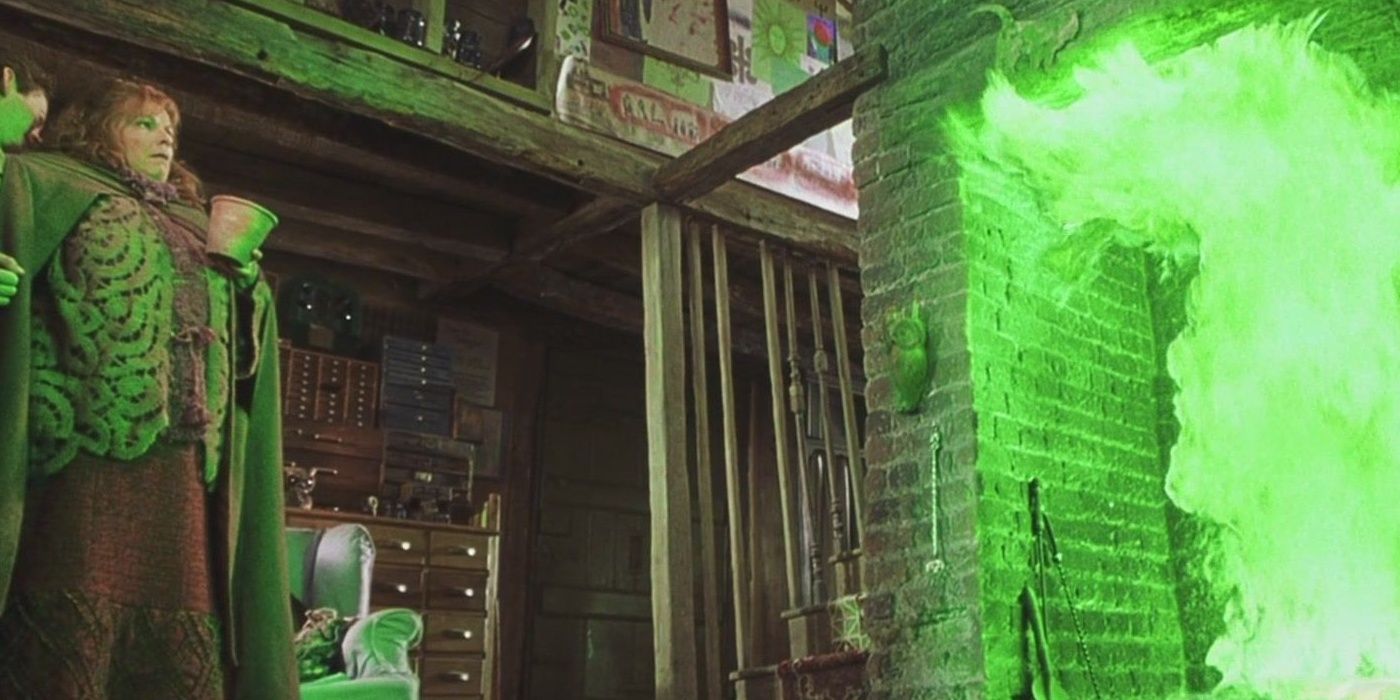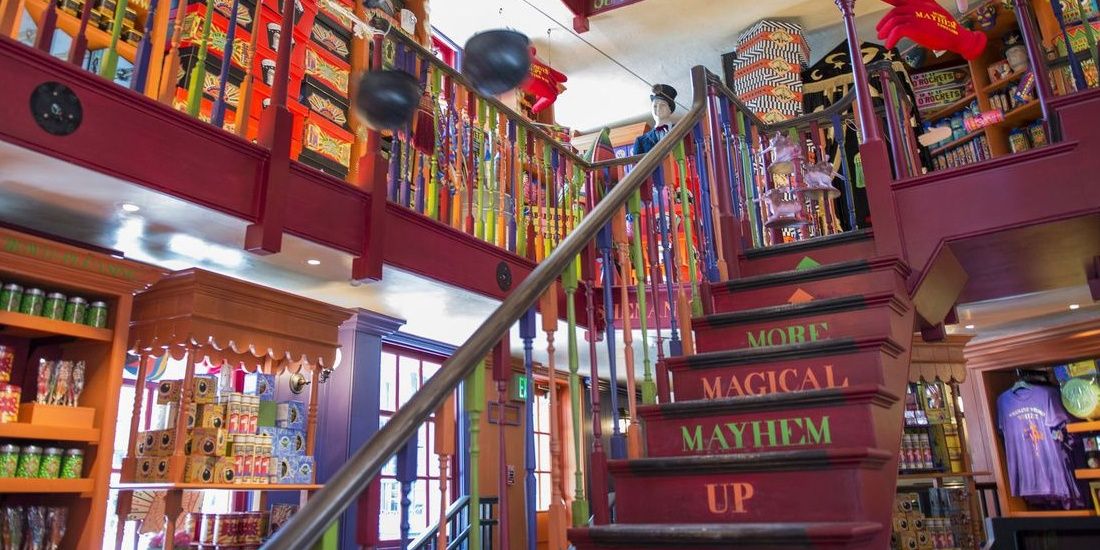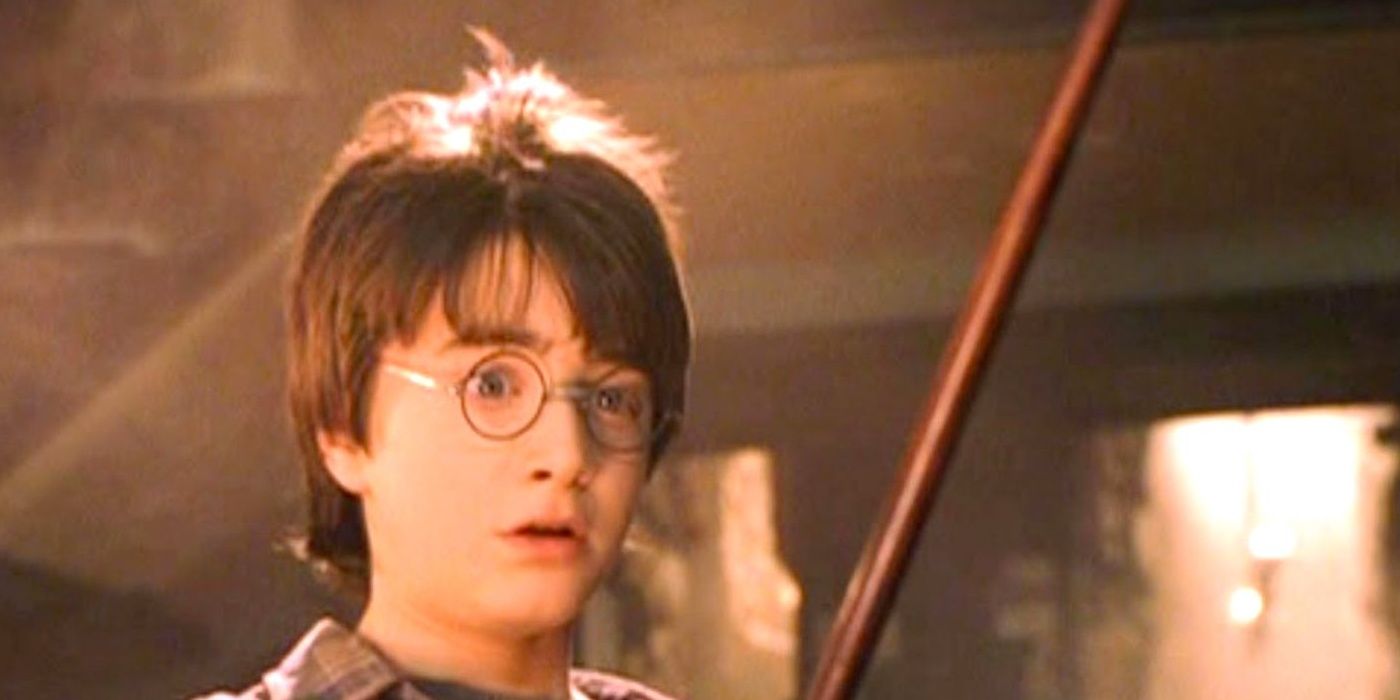"There's only one place we're gonna get all this: Diagon Alley."
Of the many magical locations that are featured throughout the Harry Potter franchise, Diagon Alley is one of the most special. It marks the first time that Harry was able to truly recognize and accept that he was, in fact, a wizard. The winding Alley which is located through a hidden passage behind the Leaky Cauldron is full of wizard shops; you can buy broomsticks, cauldrons, wands, and robes, all with galleons from Gringotts bank. Here are 10 hidden details about the fascinating little street.
Secret Purchases
The creation of Diagon Alley was a massive undertaking for set director Stephanie McMillan. The resulting wizard shopping district is full of intimate detail, detail that resulted from weeks of painstaking work. The team scoured flea markets for weeks to find the kinds of objects needed to feel shopfronts, which created an interesting challenge; no one could reveal they were buying props for the Potter films. One assistant, tasked with purchasing brooms in bulk, explained the strange purchase away by telling the retailer that she had a lot of sweeping to do.
Ollivanders
Ollivanders is widely recognized by British wizards to be the best maker of wands around. International wizards might disagree with that (Victor Krum favors Gregoravitch), but there is no denying that the wand shop has been around for quite some time.
Though this shot is only fleeting, the writing above the door reads "Makers of Fine Wands since 382 B.C." It is believed that the original Olivander came from the Mediterranean, and arrived in Britain with ancient Roman wizards, where he sold crudely constructed wands to ancient British wizards.
Wand Boxes
In keeping with their attitude of fine and thorough set construction, the shelves of Ollivanders were filled with thousands of wand boxes. Set Director Stephanie McMillan remembers that the actual number was "about seventeen thousand, which were all made by an outside company. Some of them had tassels, and all of them had labels, hand-stamped with the Ollivanders logo."
Today, CGI would likely be used instead, though this result is perfect in enhancing the aura that surrounds the strange wizard's shop.
Gringotts Wizarding Bank
Like Lord of the Rings, Harry Potter did its utmost to film as much on location as possible. Many of the scenes that take place within the walls of Hogwarts school were filmed at Oxford University; the castles and fields of Scotland and Britain were also used heavily throughout the franchise, all of which helped to create a world that is magical while still being grounded in reality.
While the magnificent, snowy marble of Gringotts Wizarding Bank seems like something out of a dream (or an artist rendering), Gringotts scenes were actually filmed on location at the Australia House in London, which is replete with immense chandeliers, tall counters, and soaring marble columns. For the destruction of Gringotts in The Deathly Hallows Pt. 2, they, of course, had to build a set to recreate the bank.
Fake Wizard, Fake Books
Gilderoy Lockhart is well known for his best-selling books (and good looks), though we learn by the end of The Chamber of Secrets that his only real talent is as a performer of memory charms, thus enabling him to take the credit for the heroic deeds committed by other wizards. His books are featured prominently in the Flourish and Blotts scene in The Chamber of Secrets, though you might not have noticed the detail that went into them. The book covers were made of tacky lizard skin, the colors of the covers were garish and strange, with raised gilt lettering, and the books themselves were made out of incredibly thin paper; a mark of a cheap book. All of this was done in a successful effort to reflect Lockhart's fraudulence into his novels.
Hagrid
His most memorable lines from the first film stand out pretty clearly in our memory: "I should not have said that."
But before Hagrid talked too much, he was the first one to show Harry Diagon Alley. In the book, he explains to Harry that the way to reveal the entrance is to tap a specific brick three times. After doing this, the brick wall splits into the archway that leads into Diagon Alley. But in the movie, Hagrid taps a total of 5 different bricks in a strange and confusing pattern. If the books are law, the entire Diagon Alley scene in The Sorceror's Stone should be null and void -- Hagrid should not have been able to get in.
Diagon Alley And The Half-Blood Prince
After Voldemort's shocking return, and a full year of brash denial, The Half-Blood Prince is decidedly darker than any of its predecessors. This heavier mood certainly carries over to Diagon Alley, where, after brutal attacks by Death Eaters, shops are boarded up and closed. The set designers didn't just create crumbling shops and boarded up windows, however. They also sapped all the color from the shots, turning the alley into a dismal street; the effect of this is that Weasley's Wizard Wheezes stands out even more starkly.
Floo Powder Mishap
When Harry goes to Diagon Alley with the Weasley's, they travel by Floo Powder. Harry messes it up and winds up in Knockturn Alley, a sidestreet of Diagon Alley that is notoriously devoted to the Dark Arts. There is a slight, and seemingly unnecessary, deviance from the books in the film that only the truest of Potter heads will have spotted. Book Harry inhales hot ash as he attempts to speak; the result is that his words come out slurred, sending him into Borgin and Burkes. Movie Harry simply says Diagon Alley really, really wrong.
"Diagonally."
Weasley's Wizard Wheezes
Running a joke shop was a task certainly up Fred and George's alley; as troublemakers-in-chief throughout their time at Hogwarts, they specialized in causing controlled mayhem. And, when they put their heads into it were able to invent some pretty amazing joke products. In creating the vibrant, brashly-colored shop, set designers based their ideas on American and Japanese toys from the '50s, '60s, and '70s.
Practical Magic
As the movies progressed and the magic grew more blatant, spells were obviously achieved through CGI. But in the beginning, certain magical moments were, surprising though it may be, created purely through practical effects. When Harry finally finds the right wand (holly and phoenix feather, 11 inches, nice and supple), a red woosh expands around the room. This effect was achieved by simply slowing the film speed from 24 frames per second to 120 frames per second, adding lighting, a smoke machine, and a fan.

